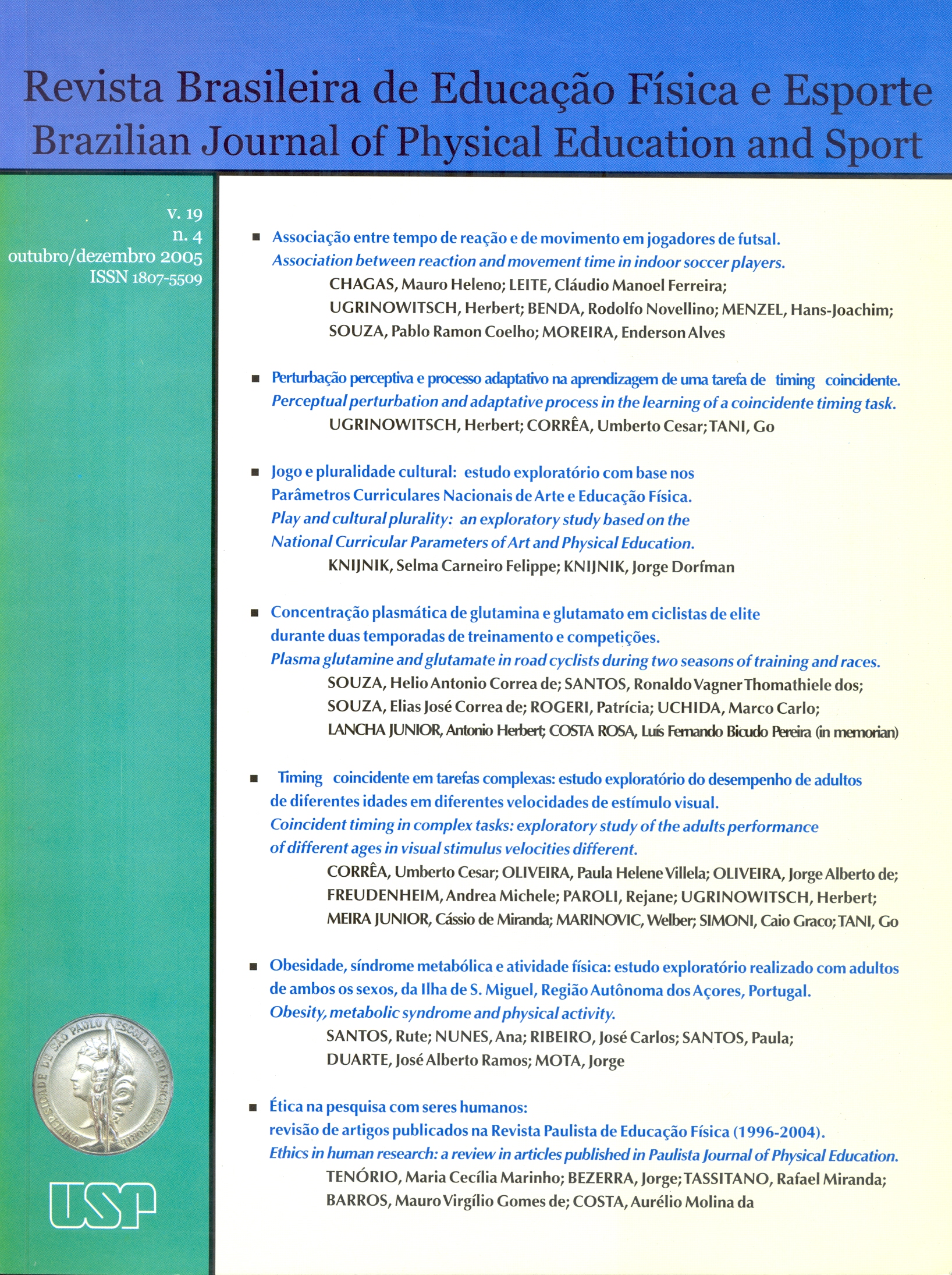Association between reaction and movement time in indoor soccer players
DOI:
https://doi.org/10.1590/S1807-55092005000400001Keywords:
Simple reaction time, Movement time, Indoor soccer, Body rotation movementAbstract
The aim of the study was to verify the level of association between simple reaction time (RT) and movement time (MT) of young indoor soccer (futsal) players (13.8 ± 0.5 years, n = 16). Simple RT was measured using the Multipsy 821 apparatus with a button pressing movement as an answer to a light stimulus. MT, turning the body to the left or right, was measured by a system composed of a contact carpet, fixed on the ground, and two pairs of doubled-photocells. The beginning of the movement was registered by loss of contact with the contact carpet and the end of the movement was recorded when the player passed through the pair of doubled-photocells. The distance between the contact carpet and the first pair of photocells was 1.45 m. Statistical analysis did not indicate significant correlation for both variables. The results can be explained by differences in the structure of the used tests and by RT and MT measurement in different motor skills. Moreover, these movements have distinct demands related to body mass. To conclude, TR performance cannot be associated with the potentiality of an athlete to perform rapid body rotation movements.Downloads
Download data is not yet available.
Downloads
Published
2005-12-01
Issue
Section
naodefinida
License
Todo o conteúdo da revista, exceto onde está identificado, está licenciado sob uma Licença Creative Commons (CC-BY)
How to Cite
Chagas, M. H., Leite, C. M. F., Ugrinowitsch, H., Benda, R. N., Menzel, H.-J., Souza, P. R. C., & Moreira, E. A. (2005). Association between reaction and movement time in indoor soccer players . Brazilian Journal of Physical Education and Sport, 19(4), 269-275. https://doi.org/10.1590/S1807-55092005000400001


